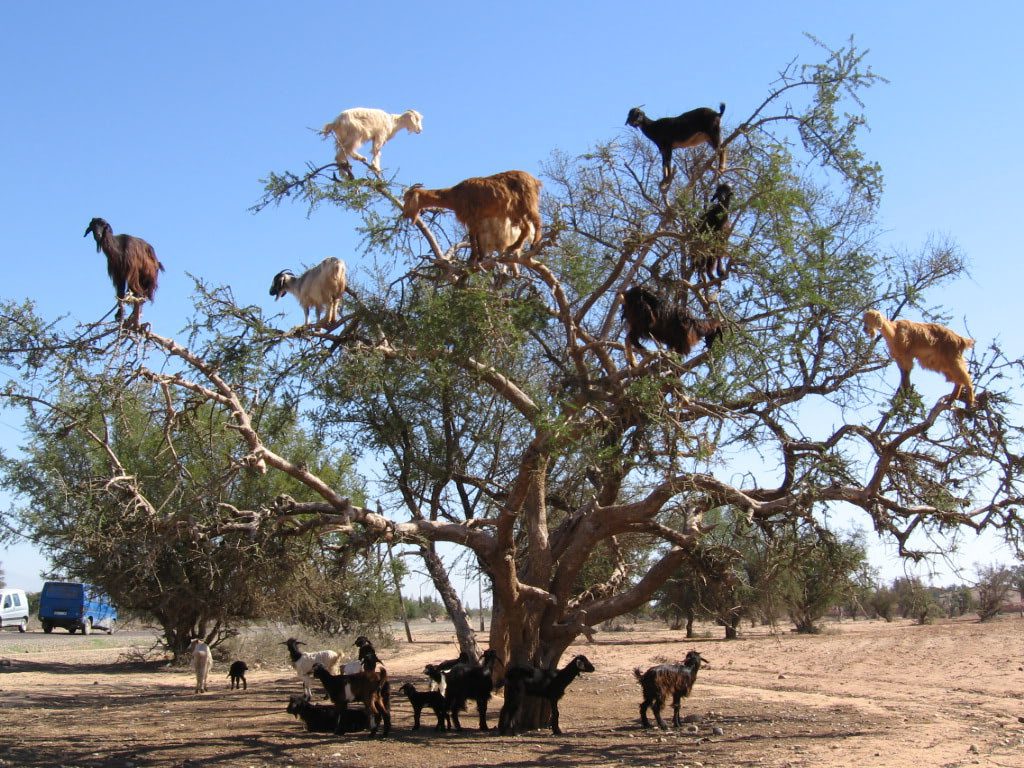Do Goats Climb Trees? Baffling But True!
Hi all, I am suneet, your cool guy behind the blog screen bringing you the information about the weird and amazing animal world. This topic is no doubt going to end up.! Let me tell you a surprise; yup, the answer is a big fat, definitely.
You won’t find this weird go-around tomfoolery on any farm, and this is the only goat that had such characteristics. This is particular species, position and always leads to such an outstanding scene. Let us step into the enchanting existence of arboreal goats and endeavor to understand the complexities of their lives atop the trees.
Scaling New Heights – A Look at Tree-Climbing Goats
First thing first, we’re going to get you familiarized with the goats and then we’ll answer “why” they do this. Small fry is not the the thing here; it means brace yourself to meet your opponents. Jebel Ammal goats, or those famous goats from Morocco, as the narrative’s tree-climbing protagonists eventually emerge. These sturdy spirits are native to the southwestern area called Souss-Massa located in Morocco. The ranges of the foothills of the Anti-Atlas Mountains get this name.
Jebel Ammal goats medium-size, short, rough coat comes in different shades, brown, black, or color. Yet the maze creeper are unequaled in two things: their agility and ability to climb up a meal plants. Unlike the majority of goats who doubtlessly select the delicious grass at the ground level, Jebel Ammal goats are actual cliff climbers; they actually approach the steep cliffs and even move into the branches of some trees!
Why Do Moroccan Goats Climb Trees
This is the reason the goats are proud to lose their balance/ precarious grip (or, if you like, not an exact fit) on climbing trees. Let me ask you a question: what is a goal of tourism? Do you think that the answer lies in the power of food? It is primarily mentioned as a rocky, withering area that receives little rainfall and endures vegetative areas. During the dry season, there might not be much to gather, as it can be tough to find any sustenance at all (pun on word “picking” applied here). Nevertheless, if there’s a good thing to grow amid the drought – it’s the Argania tree that loves in these surroundings.
The Argania tree (Morocco’s national treasure) is a prickly, well-drought-resistant lazy-bone that can bask in a European heat wave due to its long roots. These trees, which grow on and around the Jebel Ammal area, bear a fruit that resembles a green olive, and it is the very fruit that the goat population of Jebel Ammal would devour if they were given the chance. The small fruits, which generally share its name “argan” too, are where you’ll find this delectable and healthy argan nut. The nuts of this tree provide the majority of its oil and the contain the proteins and fatty acids necessary for human health.
And this is for those hardest of moves. The floodgates open once the first batch of ripe ground-level argan fruits is consumed. These goats become the root cause of the next stage in the development of the argan fruits. They get around the thorn prone bushes considering that they have extraordinary body flexibility giving them easy accessibility to fruit that is remaining on the tree. Their coolness/precision as well as their elegance(ballet movements) to maintain balance on thin branches are breathtakingly/amazingly!
FAQ
Q: Are Jebel Ammal goats the best climbers in the animal kingdom?
A: While impressive, Jebel Ammal goats aren’t the only tree-climbing mammals. Some primates like monkeys and lemurs are natural-born acrobats. However, the goats’ ability to climb trees in such a harsh environment is certainly unique.
Q: Is there anything special about the argan fruit that makes goats risk climbing for it?
A: Argan fruit is high in protein and healthy fats, making it a valuable source of nutrition for Jebel Ammal goats, especially during the dry season when other food sources are scarce.
Q: Do the goats eat the whole argan fruit? What happens to the nut?
A: The goats actually eat the entire fruit, including the fleshy pulp and the hard nut inside. The goats’ stomachs can handle the tough shells, and they digest the fruit. Interestingly, the argan nut passes through the goats’ digestive system undigested. Local people collect the argan nuts from the goats’ droppings, crack them open, and extract the valuable argan oil. This oil is prized for its culinary and cosmetic uses.
Interesting Tidbits About Tree-Climbing Goats
Here’s a quick table summarizing some key facts about Jebel Ammal goats and their tree-climbing behavior:
| Feature | Description |
|---|---|
| Goat Breed | Jebel Ammal goat (also known as Moroccan goat) |
| Location | Souss-Massa region, southwestern Morocco |
| Food Source | Argan fruit (pulp and nut) |
| Reason for Climbing | To access argan fruit in the high branches of Argania trees |
| Climbing Ability | Remarkable agility and surefootedness |
| Interesting Fact | Goats help disperse argan seeds through their droppings |
Conclusion




